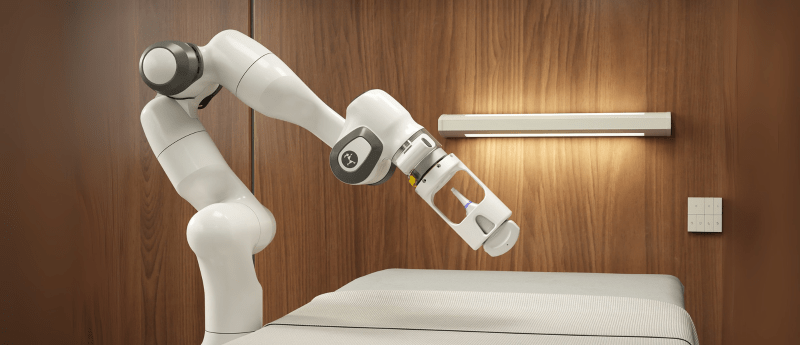NVIDIA and GE HealthCare Partner to Lead the Future of Autonomous Medical Imaging

NVIDIA and GE HealthCare unveil plans at GTC 2025 to develop fully autonomous X-ray and ultrasound systems. Powered by NVIDIA’s Isaac platform, these self-operating devices aim to combat global radiologist shortages and revolutionize healthcare access—moving beyond the AI-assisted interpretation tools offered by competitors.
The Global Strain on Diagnostic Imaging
The healthcare industry is grappling with growing demand for diagnostic imaging at a time when healthcare systems are under immense strain. Globally, more than 4.2 billion imaging exams are conducted each year, with X-rays and ultrasounds accounting for the majority of those procedures. Yet, a chronic shortage of skilled radiologists and imaging technologists continues to impact patient care worldwide.
In the United States, over 81 percent of healthcare systems report shortages of radiology technologists.
The issue is just as pressing in the United Kingdom, where the NHS faces a shortfall of over 2,000 consultant radiologists, and the Royal College of Radiologists estimates that the radiology workforce will need to double by 2030 to keep up with patient needs.
Meanwhile, sonographers face high rates of repetitive strain injuries, with nearly 90 percent reporting musculoskeletal disorders caused by their demanding workloads.
On top of these workforce challenges, nearly two-thirds of the global population still lacks adequate access to imaging equipment and trained providers.
A Groundbreaking Collaboration Announced at GTC 2025
Recognizing these challenges, NVIDIA and GE HealthCare announced a groundbreaking partnership at NVIDIA’s GTC 2025 conference in San Jose, California. Together, they aim to transform how imaging is conducted by developing autonomous diagnostic imaging systems.
Roland Rott, President and CEO of Imaging at GE HealthCare, stated, “We are excited about the potential of autonomous X-ray and ultrasound as we focus on unlocking smarter, more automated solutions that enhance efficiency and ease the burden on healthcare professionals.”
This collaboration begins with two of the most commonly used modalities — X-ray and ultrasound — but aims to go far beyond adding AI support features.
Instead, the companies are working toward building devices that can operate with minimal human involvement, handling everything from patient positioning to scan execution and image quality validation on their own.
Advanced AI Platforms Powering the Next Generation of Medical Imaging
This ambitious project is powered by some of the most advanced AI platforms and computational technologies available. Central to the partnership is NVIDIA’s Isaac for Healthcare platform, which enables the simulation and training of autonomous medical devices in virtual environments.
Kimberly Powell, Vice President of Healthcare at NVIDIA, emphasized, “The healthcare industry is one of the most important applications of AI, as the demand for healthcare services far exceeds the supply.”
Paired with NVIDIA Omniverse, engineers can recreate realistic clinical settings and model how devices will interact with patients in various scenarios.
NVIDIA’s Cosmos platform complements this by generating synthetic datasets and applying reinforcement learning to teach the devices how to adapt to complex, real-world conditions.
Hardware at the Core: Superchips and the cuDSS Library
The underlying hardware supporting this initiative is equally impressive. NVIDIA’s GH200 and GB200 superchips are engineered to handle immense AI workloads, enabling simulations and training exercises that are up to eleven times faster and five times larger than those handled by previous architectures.
In addition to this hardware, NVIDIA’s cuDSS library plays a critical role in supporting large-scale simulations essential to healthcare innovation. This library allows efficient utilization of both CPU and GPU memory, enabling highly complex computational tasks to run smoothly without hitting traditional memory limitations.
In healthcare and life sciences, this capability is particularly powerful. It allows researchers to perform advanced modeling, such as simulating electromagnetic interactions in medical devices or conducting intricate computational analyses used in drug design.
By breaking through memory constraints and supporting massive datasets, the cuDSS library ensures that developers and researchers can push the boundaries of innovation, whether they are refining autonomous medical imaging systems or running high-fidelity biomedical simulations.
Automating Patient Positioning and Enhancing Clinical Workflows
GE HealthCare brings to the table a legacy of innovation in medical imaging, having introduced groundbreaking technologies ranging from the first X-ray tube to handheld ultrasound devices.
Through this partnership, GE HealthCare is focusing on automating some of the most time-consuming aspects of imaging procedures. For example, using AI and machine vision technologies, future systems will autonomously guide patients into optimal positions for scans, eliminating the need for manual adjustments by technologists.
The companies are also exploring machine-to-patient interaction capabilities, envisioning systems that can walk patients through the imaging process — from setup to scan completion — on their own. This is expected to not only ease the burden on healthcare professionals but also improve imaging consistency and quality across diverse patient populations.
Rott noted,”We are excited about the potential of autonomous X-ray and ultrasound as we focus on unlocking smarter, more automated solutions that enhance efficiency and ease the burden on healthcare professionals.”
Standardizing Imaging Quality and Expanding Global Access
These advancements are arriving at a critical moment. Imaging protocols often vary by operator, leading to inconsistency in scan quality and interpretation. By using AI-trained models to standardize imaging procedures, this partnership could help improve diagnostic accuracy and speed up decision-making.
Additionally, the potential to deploy these autonomous devices in regions with limited healthcare infrastructure could dramatically improve access to critical diagnostic services for underserved populations.
Competitive Landscape: How NVIDIA and GE HealthCare Stand Out
While companies like Siemens Healthineers and Philips Healthcare are developing AI-enhanced tools to assist radiologists, their current offerings focus largely on support functions — such as scan interpretation, lesion detection, and workflow optimization. These systems still rely on human operators to execute the scans.
In contrast, NVIDIA and GE HealthCare are taking the next leap forward, building fully autonomous systems capable of managing both patient interactions and imaging processes from start to finish.
The advantage lies in their integration of advanced simulation platforms, massive computing power, and real-time processing, which competitors have yet to achieve on this scale.
Future Opportunities: From Hospitals to Remote Clinics
Looking forward, the opportunities presented by these partnerships are far-reaching. In the near future, autonomous imaging systems could become standard tools in hospitals, reducing bottlenecks and alleviating workforce shortages.
Another possibility is the deployment of these systems in mobile healthcare units and remote clinics, where trained imaging professionals may not be available. Machines capable of guiding patients, positioning them accurately, and capturing diagnostic-quality images on their own could dramatically expand access to care in underserved and rural areas.
Over time, these systems could also evolve to perform real-time diagnostic analysis, flagging potential issues and assisting clinicians in making faster, more informed decisions.
In the longer term, integration with electronic health records and genomic data could pave the way for fully personalized diagnostics and treatment planning.
Redefining the Future of Healthcare Delivery
The collaboration between NVIDIA and GE HealthCare signals a bold new direction for healthcare technology. By combining powerful AI platforms, massive computing capabilities, and deep clinical expertise, these companies are uniquely positioned to redefine how diagnostic imaging and medical research are conducted.
At a time when healthcare systems worldwide are struggling to keep pace with patient needs, these innovations promise not just incremental improvements but transformative change — making care faster, smarter, and more accessible to people everywhere.



